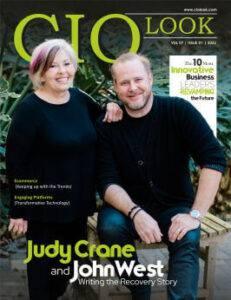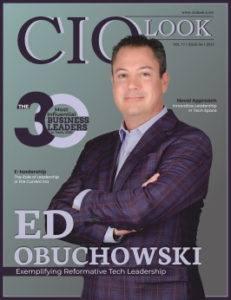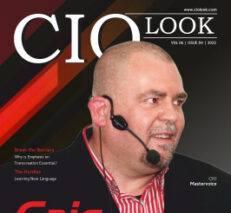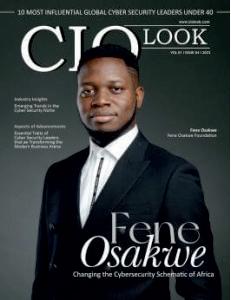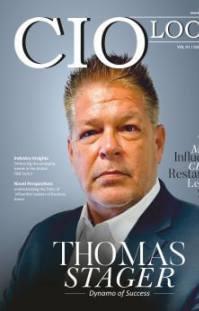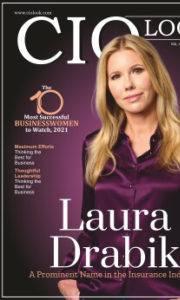

From Classroom to Community How to Cul�vate Leadership Quali�es in Students?
Facilita�ng Growth How to Embrace Learning and Development Trends?
Nada Dabbagh Professor & Director George Mason University
Advancing Learning & Development







From Classroom to Community How to Cul�vate Leadership Quali�es in Students?
Facilita�ng Growth How to Embrace Learning and Development Trends?
Nada Dabbagh Professor & Director George Mason University
Advancing Learning & Development




Inaworldwherechangeistheonlyconstant,theneed
forimpactful,forward-thinkingleadershipin Learning&Development(L&D)hasneverbeen greater.Asindustriesevolveandworkforcesbecomemore diverseanddynamic,L&Dprofessionalsplayacritical roleinshapinghowindividualsandorganizationsgrow, adapt,andthrive.
ThisCIOLookspecialeditioncelebrates,The10Most InfluentialLearning&DevelopmentExpertsof2025 trailblazerswhoareredefininghowwelearnatwork, championinginnovation,anddrivingmeasurable transformation.Thesevisionariesnotonlybuildingbridges betweenstrategyandskillsbutalsofosteringinclusive culturesofcontinuouslearning.Frompioneeringadaptive learningtechnologiestoembeddingemotionalintelligence intocorporatetrainingprograms,eachhonoreeexemplifies excellence,creativity,andadeepcommitmenttohuman potential.
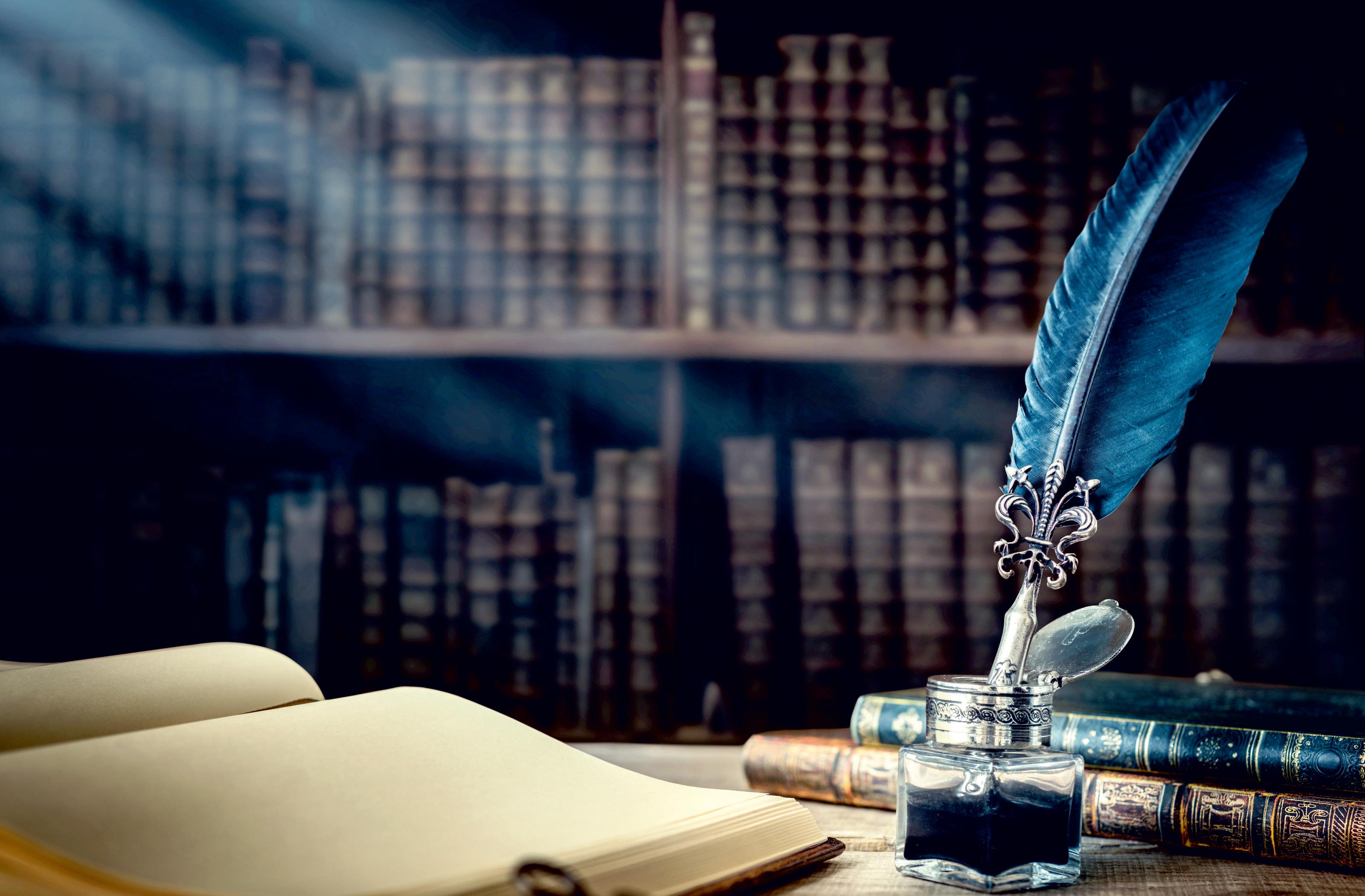
Theexpertsfeaturedherecomefromvariedindustriesand globalbackgrounds,yettheyshareacommonthread:an unwaveringbeliefinthepoweroflearningasacatalystfor personalandorganizationalexcellence.Theyarementors, strategists,technologists,andculturebuilders,each shapingthefutureofworkinmeaningfulandlastingways.
Asyouturnthesepages,wehopetheirstoriesignitenew ideasandreaffirmtheessentialroleL&Dplaysinbuilding agile,future-readyorganizations.Whetheryou’reatalent leader,aneducator,oranaspiringchangemaker,maythis editionserveasbothaspotlightandasourceof inspiration.
Withappreciationforyourcontinuedreadership,
Happy Reading!


18 22
A R T I C L E S
From Classroom to Community
How to Cul�vate Leadership Quali�es in Students?
Facilita�ng Growth
How to Embrace Learning and Development Trends?


PoojaMBansal Editor-in-Chief
CONTENT
Deputy Editor Anish Miller
Managing Editor Prince Bolton

FOLLOWUSON WE ARE ALSO AVAILABLE ON
www facebook.com/ciolook/ www.x.com/ciolookmagazine
DESIGN
Visualizer Dave Bates
Art & Design Director Davis Mar�n
Associate Designer Jameson Carl
SALES
Senior Sales Manager Wilson T., Hunter D.
Customer Success Manager Nelson M.
Sales Execu�ves Tim, Smith
TECHNICAL
Technical Head Peter Hayden
Technical Consultant Victor Collins
Research Analyst Eric Smith
SEO Execu�ve Alen Spencer
Email info@ciolook com
For Subscrip�on www.ciolook.com CONTACTUSON
Copyright © 2025 CIOLOOK, All rights reserved. The content and images used in this magazine should not be reproduced or transmi�ed in any form or by any means, electronic, mechanical, photocopying, recording or otherwise, without prior permission from CIOLOOK. Reprint rights remain solely with CIOLOOK.
AbhijitBhaduri CEO
SteinarRoland HeadofEquinor University
DavidJestaz FORVIAUniversityand HRtransformation VP
SeanRea Director,Performance andLearningServices
NadaDabbagh Director,Divisionof LearningTechnologies
SteffenStraub VicePresidentGlobal TalentManagement
AjitKar DeputyGeneral Manager (Head)-Learning& Development
VictoriaPagan SeniorLecturer, NewcastleUniversity BusinessSchool
BasPuts
GlobalHeadLearning &SkillArchitecture
AbhijitBhaduriLLC abhijitbhaduri.com
Equinor equinor.com
Faurecia faurecia-us.com
Friesen,KayeandAssociate fka.com
GeorgeMasonUniversity gmu.edu
HARMANInternational harman.com
IndianMetals& FerroAlloysLtd imfa.in
NewcastleUniversity BusinessSchool ncl.ac.uk/business
Siemen siemens.com
IsabelImhof GlobalHeadof Talent,VP
SonovaGroup sonova.com
Influentialthoughtleaderintalentmanagement,leadership development,anddigitaltransformation.Author,speaker,and advisordedicatedtoshapingfuture-readyorganizationsand fosteringworkplaceinnovation.
Leaderincorporateeducation,drivingstrategiclearning initiativesandtalentdevelopment.Passionateaboutbuilding high-performanceculturesandfosteringcontinuouslearning withinlargeorganizations.
VisionaryleaderinHRtransformationandcorporatelearning. Focusedondrivingorganizationalchange,digitalupskilling, andfosteringacultureofcontinuousprofessionaldevelopment.
Expertinperformanceimprovementandlearningsolutions. Specializesininstructionaldesign,workforcedevelopment, andaligninglearningstrategieswithbusinessgoalsfor measurableimpact.
Renownedexpertinlearningtechnologies,instructionaldesign, andonlineeducation.Innovatorindigitalpedagogy,curriculum development,andresearchontechnology-enhancedlearning environments.
Globaltalentmanagementspecialistwithdeepexperiencein leadershipdevelopment,successionplanning,and organizationalcapabilitybuilding.Advocatesfordiversity, inclusion,andfuture-focusedworkforcestrategies.
Seasonedlearninganddevelopmentstrategistwithexpertisein talentmanagement,trainingprograms,andorganizational growth.Committedtoemployeeskillenhancementand leadershippipelinedevelopment.
Accomplishedacademicspecializinginbusinesseducation, leadershipdevelopment,andorganizationalstudies.Passionate abouttransformativeteaching,research,andfosteringstudent engagementinhighereducation.
Innovatorinlearningarchitectureandskillsdevelopment. Expertindesigninggloballearningframeworks,digital learningecosystems,andstrategicworkforcecapability initiativesfororganizationalgrowth.
Expertinglobaltalentmanagement,leadershipdevelopment, andorganizationaleffectiveness.Committedtonurturinghighpotentialtalentandadvancingpeoplestrategiesforbusiness success.
My early experiences in corporate IT and academia provided me with a unique perspective on bridging theory with practice. By combining my technical expertise with a passion for teaching, I cultivated an approach that emphasizes experiential and inquiry-based learning.”


In the ever-evolving landscape of learning and
development,NadaDabbagh,Professor&Directorof the Division of Learning Technologies at George Mason University, stands as a beacon of innovation, leadership,andacademicexcellence.Hercontributionshave significantly shaped the field of instructional design and technology, positioning George Mason University at the forefront of educational advancements. With an illustrious career spanning over two decades, Dabbagh has played a pivotal role in bridging the gap between academia and industry, ensuring that educational frameworks remain relevantinthedigitalage.
Attheheartofherjourneyliesanunwaveringcommitmentto fostering dynamic learning environments, mentoring future educators, and spearheading transformative initiatives. Her expertise in integrating digital learning technologies, designing pedagogical frameworks, and collaborating with globalthoughtleadershassolidifiedherreputationasoneof the most influential figures in learning and development. Through her leadership, she has cultivated an academic ecosystem that not only embraces innovation but also empowers students and professionals to excel in their respectivefields.
This article delves into Nada Dabbagh’s insights on her professional journey, the guiding principles behind George Mason University’s success, the evolving trends in learning and development, and the role of technology in optimizing educational experiences. Her visionary leadership continues toshapetheindustry,ensuringthatbothfacultyandstudents remain adaptable in an ever-changing world of knowledge andskillacquisition.
Dabbagh’s foray into the field of learning and development wasserendipitous.InitiallydrawntoteachinginbothHigher Education (HE) and Executive Education (EE), she found herself exploring academic disciplines that aligned with her backgroundinIT,computeroperations,andsystemsanalysis. It was during this exploration at Penn State that she discoveredInstructionalSystemsDesign(ISD),thebackbone of learning and development. This discovery marked the beginning of her passion for integrating instructional design principles with technological advancements to enhance learningexperiences.
“My early experiences in corporate IT and education provided me with a unique perspective on bridging theory
with practice. By combining my technical expertise with a passion for teaching, I cultivated an approach that emphasizes experiential and inquiry-based learning.” She emphasizes.Overtheyears,hercontributionstoinstructional design have played a crucial role in shaping the learning methodologies adopted by institutions and organizations worldwide.
ThesuccessofGeorgeMasonUniversitycanbeattributedto its commitment to fostering innovation, inclusion, and academic excellence. The university’s motto, "All Together Different," encapsulates its ability to adapt to the evolving needsofstudentsandtheworkforce.AccordingtoDabbagh, theguidingphilosophythathaspropelledMason’ssuccessis rooted in the principles of engagement, empowerment, and excellence.
Theuniversityencouragesfacultyandstudentstoexperiment with pedagogy, curriculum design, and research methodologies.Byfosteringanenvironmentwhereacademic innovationthrives,Masonhaspositioneditselfasaleaderin instructional design, talent development, and workplace learning. This adaptability has enabled the institution to remain at the forefront of educational transformation, ensuringthatitsprogramsalignwiththedynamicdemandsof industriesworldwide.
As the Director of the Division of Learning Technologies, Dabbagh has played a pivotal role in ensuring that George MasonUniversityremainsaheadofindustrytrends.Through hervisionaryleadershipincurriculumdevelopment,shehas successfullyintegratedcutting-edgepedagogicalframeworks and digital learning technologies into academic programs, making learning more dynamic and relevant. By constantly evaluatingemergingeducationalmethodologies,sheensures that students and faculty have access to the latest advancements in instructional design and technology. Her efforts have not only kept the university at the forefront of innovation but have also fostered an academic culture that valuesadaptabilityandcontinuousgrowth.
“My approach involves an ongoing process of curriculum enhancement, where emerging trends are seamlessly incorporated into existing programs, ensuring their relevance in an ever-changing educational landscape. I activelypromoteinterdisciplinarycollaborations,thatbridge



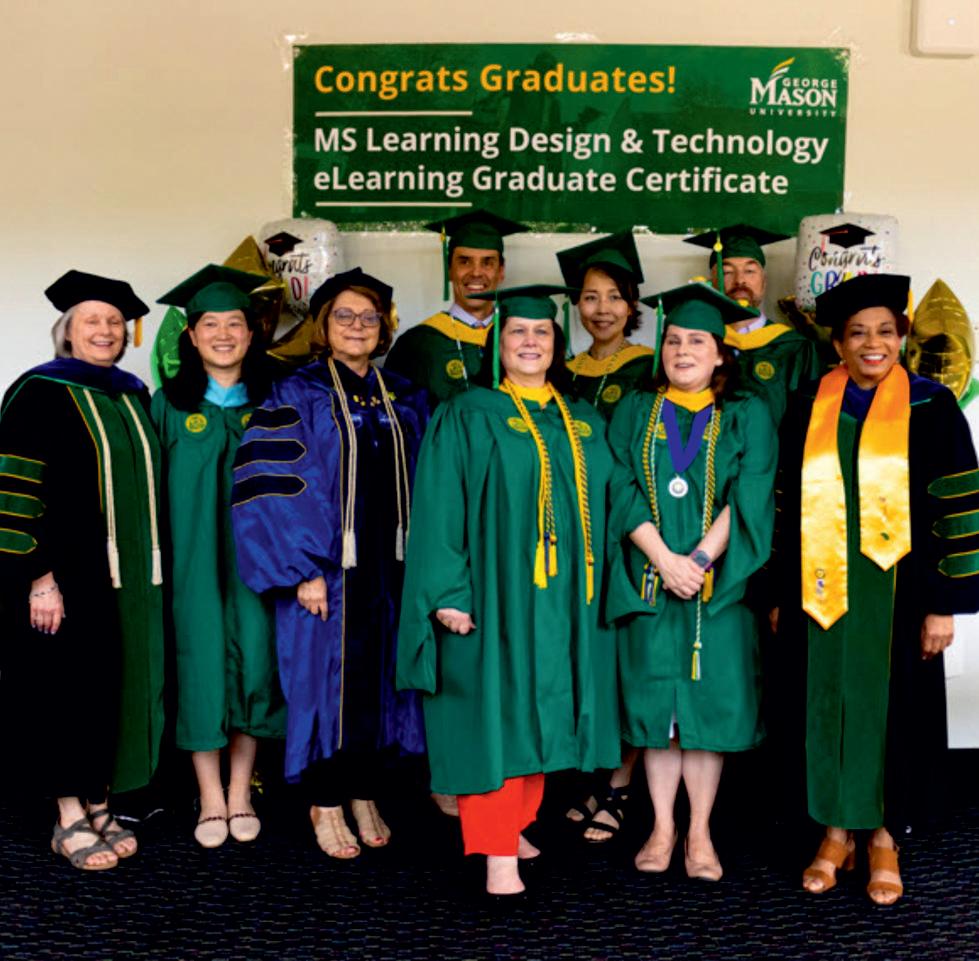

the gaps between instructional design and corporate learning strategies, creating a w e l l - ro u n d e d e d u c a t i o n a l experience ” She says Her engagement with industry leaders further strengthens Mason’s programsbyaligningthemwith theevolvingdemandsofthejob market. By fostering an environment where faculty and students are encouraged to experiment with new methodologies,shecultivates a culture of curiosity and innovation This proactive stance ensures that George Mason University (GMU) not only keeps pace with industry trends but also leads the way in shapingthefutureofeducationand learningtechnologies.
AclearexampleofDr.Dabbagh’sefforts to stay at the forefront of innovation and industry trends, is when she was tapped to organize George Mason University’s Immersive Learning Technologies in Workforce

place in Arlington, VA, for two years in a row (2023-24), bringing together industry professionals, digital product designers, L&D experts, education researchers, information technologists, computer scientists, HCI and data analytics engineers, as well as AR/VR/XR/ER start-ups and GMU alumsandstudents.
See https://techconnectdc.org/2024-imtech-conference/ for moreinformationaboutthisevent.
Dabbagh’s leadership philosophy is deeply rooted in coaching,mentoring,andmodeling,allowinghertocreatea guided yet supportive approach to leadership. “As a teacher at heart, I prioritize the professional growth of faculty and students, guiding them through the complexities of academia while instilling a passion for lifelong learning.” Through a combination of hands-on mentorship, research-driven methodologies, and strategic academic initiatives, Dr Dabbagh has nurtured an environment that encourages collaboration, innovation, and excellence. Her ability to inspire and empower individuals has been instrumental in shaping a thriving academic community that values both intellectualcuriosityandprofessionaldevelopment.
Training and Education Conference, which took
Comments recently posted on Dr. Dabbagh’s LinkedIn page th on her 25 anniversary at Mason, speak to her impactful leadership approach: “Nada! Thank you for the outstanding instruction!”and“CheerstoyouNada,theway-makerforso manyintheL&Dcommunity”and“Congratulations,Nada! My gratitude goes out to your guidance and support throughouttheyears…Yourpassionforhelpingothers,and
As a teacher at heart, I prioritize the professional growth of faculty and students, guiding them through the complexities of academia while instilling a passion for lifelong learning.”
your dedication to research and teaching have left a lasting impactonmepersonally…”and“Congratulationsandthank youforbeingadifferencemakerandselflessinhelpingusall grow.”
Dr Dabbagh’sroleasaDistinguishedFacultyMentor(DFM) from 2022 to 2023, further solidified her commitment to faculty development, as she played a key role in coaching assistant professors in their journey toward promotion and tenure. Beyond the classroom, her influence extends globally—she has delivered over 30 international keynotes, presented at more than 100 conferences, authored seven books, and contributed significantly to the development of educational technology tools, most notably, the Learning Asset Technology Integration Tool (https://latist.gmu.edu/) that won the SLOAN-C Effective Practice Award in 2010. Underherleadership,theDivisionofLearningTechnologies has been recognized with the prestigious Learning! 100 Award in 2014 and 2015, underscoring her ability to drive impactfulchange.Theseaccoladesserveasatestamenttoher unwaveringdedicationtofosteringacademicexcellenceand herabilitytocreatetransformativelearningexper.
My approach involves an ongoing process of curriculum enhancement, where emerging trends are seamlessly incorporated into existing programs, ensuring their relevance in an ever-changing educational landscape. I actively promote interdisciplinary collaborations, that bridges the gaps between instructional design, engineering education, and corporate learning strategies, creating a well-rounded educational experience.”
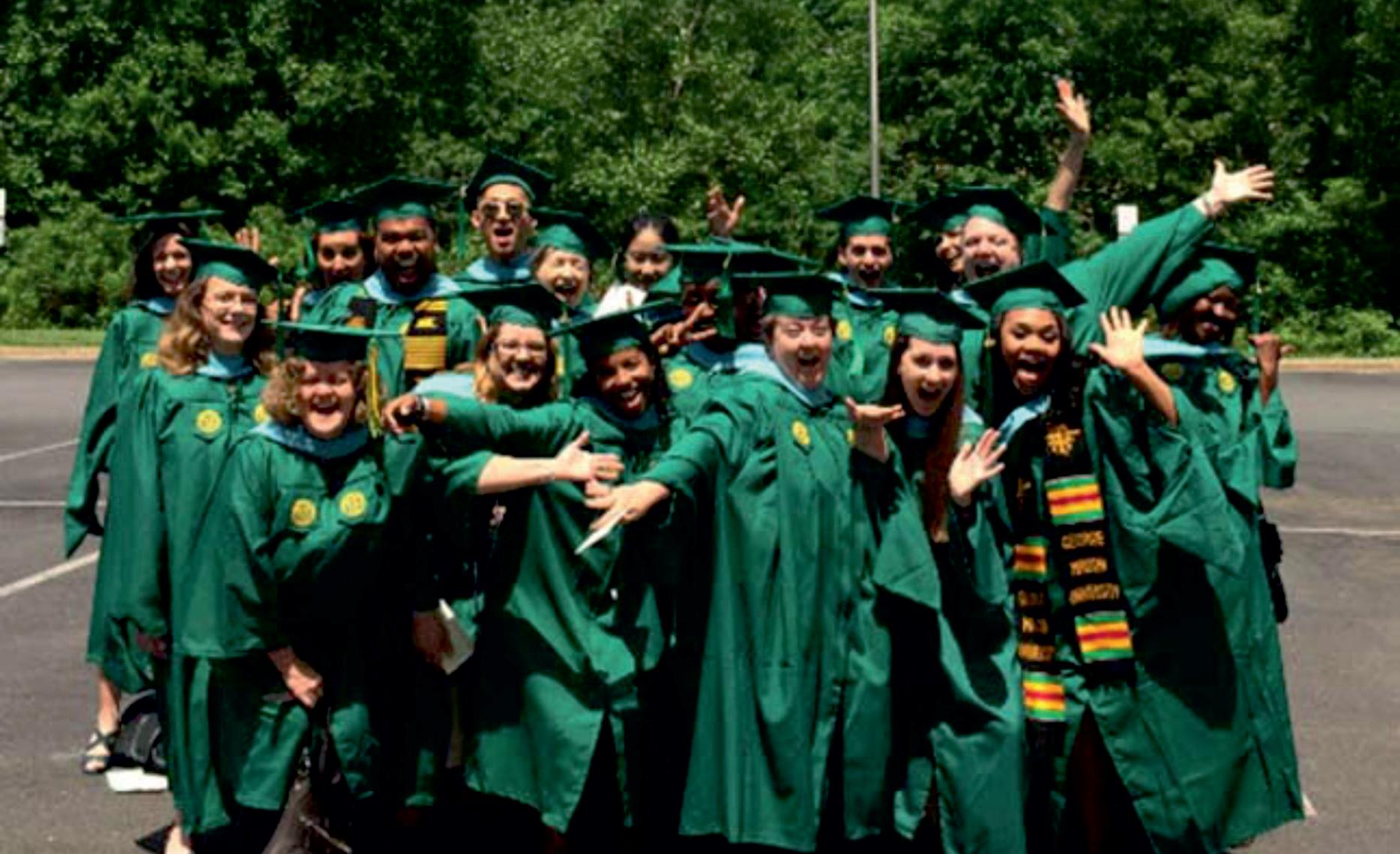
At George Mason University, the balance between operationalefficiencyandstudentexperienceisacornerstone of academic strategy, ensuring that students receive a personalizedandengagingeducation.AccordingtoDabbagh, “Leveraging technology-driven customization is key to empowering students in their learning journeys. By personalizing the learning experience using technology, and supporting the development of self-directed and lifelong learning skills, students are empowered to develop their own Personal Learning Environments (PLEs) to achieve their learning goals and educational potential.” This learnercentered model enhances engagement, motivation, and academic success by providing a flexible and adaptive learningecosystem.
The advent of Generative AI has further transformed the educational landscape, equipping educators with powerful tools to augment teaching practices and personalize instruction.Adaptivelearningmodels,digitalresources,and AI-driven platforms enable instructors to cater to diverse learning needs, creating more inclusive and effective educational experiences. By continuously refining its approach to digital learning, Mason ensures that students receive a customized education that aligns with their aspirations while maintaining high standards of academic rigor Dabbagh’s work in integrating technology and pedagogy plays a crucial role in shaping these experiences, making Mason a leader in innovative and student-centric learning.

While Dabbagh’s primary focus is on instructional design and technology, she recognizes that sustainability in education extends beyond academic operations—it is about fostering a long-term commitment to responsiblelearningpractices. “At George Mason University, sustainability is seamlessly integrated into the educational framework through the strategic use of Learning Management Systems (LMS) and digital learning technologies. Together, these learning technologies enable distributed learning experiences that cut across instructional delivery models, mobile devices, and learning interactions, significantlyreducingtheuniversity’s
environmental footprint by minimizing reliance on physical resources such as paper and printed materials.” She says. The institution's emphasis on online and blended learning models further supports its sustainability goals by offering flexibleandeco-friendlyalternativestotraditionalclassroombasededucation.Thisapproachnotonlyreducestheneedfor extensive campus infrastructure but also broadens access to education for students worldwide. Additionally, fostering a culture of environmental awareness ensures that students graduate with a mindset geared toward sustainability, preparing them to be responsible global citizens By incorporating these principles into the curriculum and institutionaloperations,sheandherteamarepavingtheway foragreener,moresustainablefutureineducation.
OneofthemostimpactfulinitiativesledbyDabbaghwasthe development of the Design Thinking Minor (DTM), a program that exemplifies interdisciplinary collaboration and innovative learning. Launched through an interdisciplinary Curriculum Impact Grant (CIG), this initiative brings together insights from diverse fields, including humanities, socialsciences,visualandperformingarts,education,human development, engineering, and computing. By integrating thesedisciplines,theDesignThinkingMinorequipsstudents with problem-solving skills that bridge the gap between technology, education, and business, preparing them for the challengesofthemodernworkforce.
This program embodies George Mason University’s commitmenttofosteringcreativity,criticalthinking,andrealworld problem-solving. Through hands-on projects, collaborativelearningexperiences,andexposuretoindustry best practices, students develop the ability to approach complex challenges with a multidisciplinary mindset Dabbagh’s leadership in spearheading this initiative underscores her dedication to redefining traditional educationalparadigmsandcreatinglearningexperiencesthat are both impactful and future oriented. By continually pushing the boundaries of what is possible in education, she ensuresthatMasonremainsaleaderinacademicexcellence andinnovation.
Mason continuously evolves to meet the demands of the digital age, incorporating AI-driven platforms, immersive learning tools, and data-driven insights to enhance educational outcomes. However, Dabbagh emphasizes that technologyisnotmerelyatool;rather,itshapessociocultural practicesandlearningmethodologies.


My commitment to innovation, mentorship, and interdisciplinary collaboration solidifies my status as one of the most influential scholars in learning and development today.”
Adopting a Socio-Material Entanglement (SET) or TechnoSocial approach to integrating technology into the teaching and learning process, Dabbagh underscores the symbiotic relationshipbetweenhumansandtechnology Byrecognizing that instructional technologies influence behavior, institutionscandesignmoreeffectivelearningenvironments.
GeorgeMasonUniversitycultivatesacultureofprofessional development through a structured Promotion & Tenure (P&T) system. Faculty members are encouraged to grow acrossthreedomains:
• TeachingExcellence
• ResearchContributions
• Service&Leadership
Byofferingleadershiproles,researchgrants,andprofessional development workshops, the university ensures that faculty members are empowered to innovate and lead within their respectivefields.
Dabbagh’s contributions to learning and development at GMU have redefined the educational landscape. Through Mason’s visionary leadership, the Division of Learning Technologies continues to push boundaries in instructional design,technologyintegration,andstudent-centeredlearning through its faculty, students, alums, academic programs, research output, and industry partnerships and events. “My commitment to innovation, mentorship, and interdisciplinary collaboration solidifies my status as one of the most influential scholars in learning and development today.” She says.
Bycontinuouslyevolvingandadaptingtotechnologytrends in the digital age, providing flexible curricula and learning assets that serve the education needs of an emerging workforce, and empowering learners to become part of a communitythatextendsbeyondtakingcoursesandearninga degree, Mason remains a global leader in higher education, ensuring that students and faculty alike thrive in an everevolvingworld.

Instilling leadership qualities in students is not about
puttingtheminlineforeventualjobplacements,butrather placingtheminpositionstoberesponsiblefortheabilityto motivate, collaborate, and create change within any environmenttowhichtheymightbeassigned Theseskills, if instilledatanearlyanstage,canmakeyoungadultscapableof being productive and contributing members of society. Leadership development is an intentional and strategic process that involves academic advising, experiential learning,andmentoring.
Amajorityofstudentshaveuntappedleadershippotential,and ifguidedintherightmanner,canleadtoarealpersonalchange Individual change as a leader begins with self-awareness, developing interpersonal, communication, and decisionmaking competencies. Schools and education organizations are at the center of such identification and building of skills throughformalaswellasinformalprocesses.
Supportive learning culture is the gateway to leadership traits among students. It involves fostering a culture of inquiry, teamwork,andenterprise.Ifstudentsfeelsecuretospeakfreely andtakeconsideredriskswithoutfearofridiculeorfailure,they can go ahead and become leaders with confidence. School leadersandteacherscancontributetowardsdevelopingsucha culturebyhavingrespectfulcommunication,activelistening, andempathy
Apart from this, identification and recognition of leadership behaviorinthedailyclassroomalsocontributesignificantlyto improvingtheconfidenceandmotivationofastudent Whena student manages group projects, mediates peer conflicts, or

proposesnewideas,recognitionbyteachersattheappropriate moment revalidates the target behavior. Such small interactionsinthedailyclassroomcumulativelyformrobust pillarsofleadership.
Perhaps the finest way to instill leadership in students is practical participation in school and community life. Student government, clubs, or event-planning committees provide students with the chance to fill roles and learn to value cooperation Thesearepresentedtothemasreal-lifesituations with negotiation, planning, and decision-making involved—alltheattributesofafineleader
In addition, allowing the students to start something in the classroom situation can prove to be highly advantageous as well. Assigning students rotating roles such as group leader, project coordinator, or discussion leader brings about responsibility and acquaints students with other aspects of leadership. By doing this on a consistent basis, adaptability develops as the students come to accept different situations andleaddifferently
Communication and leadership go together In order to turn themintoeffectiveleaders,studentsmustbeequippedwiththe abilityofeffectiveexpressionofideasandideasthatpersuade Oral and written communications must be accorded significance through structured activities such as debates, presentation, and reflective writing in learning institutions. Theseactivitiesenhancearticulatenessandawarenessofthe audienceandcriticalthinking.
Also worthwhile is the exercise of active listening, all too frequently ignored Encouraging students to listen actively to each other as class debates take place and to differing viewpoints fosters empathy and receptivity essential components of a successful leader. Students may learn from teachers'behaviorandcommentsandadoptamorethoughtful andengagingstyleofcommunication.
Leadershipeducationwillnotstopatextracurricularactivities butneedstobeembeddedasanintegralpartofthecurriculum. Teacherscanincorporateleadershipthemesinmultiplesubjects
andmakestudentsstudyhistorical,scientific,orliteraryfigures based on their style of leadership and moral choices. The interdisciplinarity process makes sure that students view leadershipasabroadandflexibleskill.
Project-based learning is another effective pedagogy to build leadership Giving students actual problem-solving assignmentsforthemtoworkoninteamsnaturallycausesthem to take on planning, delegating, and execution roles. These experiencesareamirrorofreal-worldcircumstancesandmake thestudentshardyleadersbeyondtheclassroom.
Mentors play a central role in shaping a student's leadership pathway.Havinggoodexamplestoemulate teachers,senior students, and community leaders is capable of inspiring students to the extent they can provide students with helpful tips Regularinteractionwithmentorsenablesstudentstograsp leadershipbehaviorsanddecision-making.".
Aside from this, official mentorship schemes whereby elder, experienced individuals’ mentor younger, less experienced pupils can have a ripple effect within schools. The younger students do not merely gain leadership skills, but the experienced ones become better too. The double dividend of mentoringmakesitanextremelyeffectivetoolofleadership developmentacrossallagegroups.
Building student leadership requires a deliberate, patient, and persistenteffort.Fromcreatingapositiveclimateandfostering participation to integrating leadership into the classroom and developing emotional intelligence, all are necessary With proper foundations, students can be leaders who not only succeedbutarealsocompassionateandethical.
Asschoolsystemsexpandandevolve,withanemphasisonthe formation of leadership at the center of student education, we prepare ourselves for presenting future generations not only readytowork,butreadytoservesociety.Byformingleadership today,webuildabrighterfuture





Inthefast-paced,ever-changingworldofbusinesstoday,stayingahead
is not merely about learning current skills it's about constantly learning, adapting, and expanding. The most successful people and companiesrecognizethatembracingLearningandDevelopmentTrendsis notmerelyanoptionbutastrategicnecessity Astechnology,workplace culture,andemployeeexpectationschange,sodothemeansandpriorities of learning. But how can individuals and organizations effectively embracethesetrendsandmakethempartoftheirgrowthjourney?
Let’s explore the key steps and mindsets needed to truly integrate modern learninganddevelopmentintoyourdailyculture.
Thefirststeptoembracinganytrend especiallythoserelatedtolearning and development—is developing a curious nature. With technology developmentslikemicrolearning,personalizedlearningjourneys,AI-based platforms, and virtual reality (VR) training gaining popularity, receptivenesstonewideasmatters.
Curiosityleadstoexploration Leadersandemployeeswhoarecuriousare morelikelytoexperimentwithnewtoolsandmethods,andtheprocessof installing Learning and DevelopmentTrends is streamlined and effective. Insteadofresistingchange,theybegintoseeitasapathtosuccess.
Traditionally, professional growth was seen as a secondary benefit something you do when you're not too busy or to comply with regulations Times have drastically changed Nowadays, companies that embrace learning as a strategic endeavor are outperforming their counterparts.
Learning and Development Trends more and more focus on aligning learning activity with business goals. From upskilling workers to drive digital transformation to developing leadership capability for succession planning, learning is no longer a support department—it's a growth engine.
When companies observe the ROI of learning investment, they are more pronetointegrateitintothecompany'sDNAratherthanseeitasastandalone initiative.

Thosearethedayswhentheone-size-fits-alltrainingprograms werebeingadheredto OneofthemostinfluentialLearningand Development Trends in recent years is the shift towards personalization.Today'slearnerswanttohaveexperiencethat isalignedtotheirjob,leveloflearning,andcareergoals.
This means giving employees mastery over what they learn, how they learn, and when they learn In whether or not a learning is delivered in various formats (videos, podcasts, elearning modules, or hands-on workshops) or in designing personalizedlearningpathswithdataandAI,personalization increasesengagementandrelevance.
Building this habit creates autonomy and ownership, which allowslearnerstogrowinwaysmostmeaningfultothem
4.Leverage Technology Without Forgetting the Human Touch
Technology has revolutionized learning, with Learning ManagementSystems(LMS),mobilelearningapps,andonline collaboration spaces providing content in ways never seen before Artificial Intelligence (AI) is especially empowering adaptive learning experiences that adjust in real-time to the behavioroflearners.
But embracing Learning and Development Trends does not meanremovingthehumanelement.Coaching,mentoring,team discussion,andlearningfromoneanotherremainessential In fact, effective learning programs combine sophisticated tech withgenuinehumaninteractiontocreatevibrant,interactive learningexperiences.
5.FosteraCultureofOngoingLearning
Learningmustnotbeconfinedtoatrainingroomortoanannual seminar Among the most critical Learning and Development Trends today is the shift toward continuous learning cultures Theseareenvironmentswherecuriosity,experimentation,and knowledge-sharingbecomepartoftheday-to-dayworkflow
Toestablishthiskindofculture,leadersmustleadbyexample. When leadership itself is publically learning and growing, it sendsapowerfulsignal:learningisimportanthere.
Youcanbuildonthatbysponsoringcross-functionalprojects, offering stipends for learning, celebrating milestones, and rewardingthosewhoseekoutdevelopment
For many decades, success in learning was measured by attendance or completion Now, however, one of the more enlightened Learning and Development Trends is looking at outcomesratherthanactivity.
How did one training program improve performance? What skillswereestablished?Areemployeesapplyingwhatthey've acquired? By making it transparent what's to be learned and linking it to business KPIs, organizations better can measure the return on their learning investment and refine their strategiesasaresult.
Data analytics, feedback loops, and post-training assessments are mechanisms that bridge this gap and ensure learning investmentspayoffintangibleoutcomes
Social learning learning by observing, interacting, and working with others—is increasingly prevalent. With the emergenceofhybridandremoteworkasanorm,Learningand Development Trends increasingly center on collaborative platforms that allow individuals to learn collectively, exchangeknowledge,andtackleproblemsasacollective.
Consider creating learning communities at your firm or incorporatingdiscussionboards,collaborativeworkspaces,and peer review into your training. Not only do they boost engagement, but they help reinforce knowledge by putting it intoactualpractice.
Embracing Learning and Development Trends is not merely adoptingnewtoolsortechniques it'saboutcreatingagrowth cultureofinnovationandagility.WhetheryouareanHRleader, amanager,oranindividualcontributor,thecalltoactionisthe same:investinlearning,staycurious,andkeepevolving.
As the workplace continues to change, those who care about continuous development will be the ones to step forward creating not just better workers, but better organizations,andultimatelyabetterfutureofwork.











